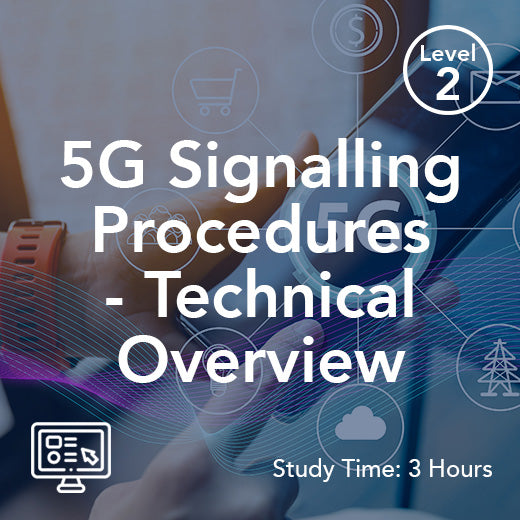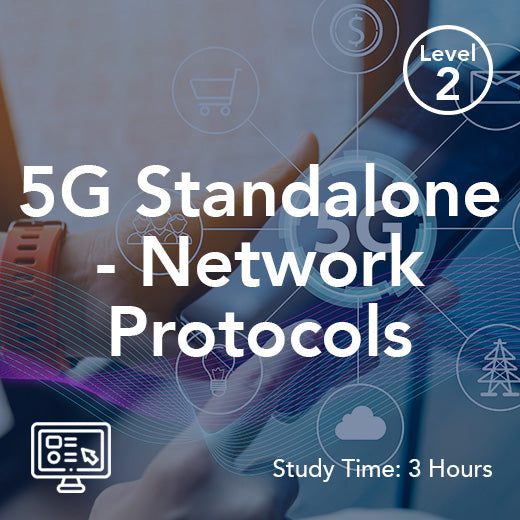Oturum Başlatma Protokolünü Anlama: Herkes İçin Basit Bir Kılavuz
- , by Stephanie Burrell
- 16 min reading time
Günümüzün dijital çağında, iletişimimizin temelini oluşturan teknolojiyi anlamak her zamankinden daha önemli. Oturum Başlatma Protokolü veya kısaca SIP, internet üzerinden sesli ve görüntülü aramalar aracılığıyla bağlantı kurma şeklimizde önemli bir rol oynar. Kulağa teknik gelse de, SIP biraz rehberlikle herkesin anlayabileceği bir şeydir. Bu kılavuz, SIP'in temellerini açıklayarak, teknik geçmişi ne olursa olsun herkesin erişimine sunmayı amaçlamaktadır. İster bir teknoloji meraklısı olun, ister en sevdiğiniz uygulamaların nasıl çalıştığını merak ediyor olun, bu basit açıklama çevrimiçi iletişim dünyasına ışık tutacaktır.
Oturum Başlatma Protokolüne Giriş
Oturum Başlatma Protokolü (SIP), internet üzerinden sesli ve görüntülü aramaları mümkün kılan modern dijital iletişimin temel taşlarından biridir. SIP protokolü, IP ağları üzerinden gerçek zamanlı ses, video ve multimedya oturumları kurmak, yönetmek ve sonlandırmak için tasarlanmış bir sinyal protokolüdür. Bu bölüm, SIP'nin ne olduğuna, geçmişine ve günümüzün teknoloji odaklı dünyasındaki önemine genel bir bakış sunmaktadır.
SIP'nin esnekliği, VoIP telefon görüşmelerinden görüntülü konferans ve anlık mesajlaşmaya kadar çok çeşitli uygulamaları desteklemesini sağlar. IP tabanlı iletişimi mümkün kılan SIP, IP ağları üzerinden çeşitli iletişim yöntemlerini destekleyerek, onu birleşik iletişim sistemlerinde önemli bir bileşen haline getirir.
SIP'in çok yönlülüğü, ses, video ve mesajlaşma gibi birden fazla veri akışını tek bir iletişim çerçevesi içinde işleme yeteneğinin temelini oluşturan İnternet Protokolü üzerinden çalışabilme yeteneğinden kaynaklanmaktadır.
SIP nedir?
Oturum Başlatma Protokolü, gerçek zamanlı oturumları başlatmak, sürdürmek ve sonlandırmak için kullanılan bir sinyal protokolüdür. Bu oturumlar sesli aramalardan multimedya konferanslarına kadar çeşitlilik gösterebilir. SIP, cihazlar arasında iletişim kurarak veri paketlerinin sorunsuz bir şekilde hedeflerine ulaşmasını sağlar. SIP protokolü, oturumları kurmak, yönetmek ve sonlandırmak için bir istek-yanıt sinyal süreciyle çalışır ve genellikle istemci-sunucu mimarisinde SDP gibi diğer protokollerle etkileşime girer.
SIP, özünde , aramaları birbirine bağlayan ve gerekli yönlendirmeyi gerçekleştiren bir dijital santral operatörü gibidir. Uygulama katmanında çalışır, yani ister internet ister özel ağ olsun, altta yatan ağdan bağımsız olarak çalışır. Bu esneklik, SIP'yi internet tabanlı iletişimler için tercih edilen bir seçenek haline getirir. SIP, yalnızca sesli ve görüntülü aramaları değil, aynı zamanda çok taraflı ses, görüntü ve ekran paylaşım oturumlarını da kolaylaştırarak toplantılarda, web seminerlerinde ve birleşik iletişim sistemlerinde gerçek zamanlı iş birliğine olanak tanır.
SIP yalnızca ses ve görüntüyle sınırlı değildir. Anlık mesajlaşma ve çevrimiçi oyunları da yönetebilir ve internet telefon görüşmesi, görüntülü konferans ve diğer gerçek zamanlı iletişimler gibi multimedya oturumları oluşturup yönetebilir. Birden fazla veri akışını işleyebilme özelliği, onu çok yönlü ve yaygın olarak kullanılır hale getirir. Arama kurulumu, aktarımı, ulaşılabilirlik ve mobilite gibi SIP özellikleri, çeşitli platformlarda kesintisiz ve çok yönlü iletişimi mümkün kılar.
SIP'nin tarihi
SIP, internet iletişiminin ilk adımlarını attığı 1990'lı yıllarda ilk kez ortaya çıktı. Protokol, büyüyen internet telefonculuğu alanına standart getirmeyi amaçlayan İnternet Mühendisliği Görev Gücü (IETF) tarafından geliştirildi.
Yıllar içinde SIP önemli ölçüde gelişti. Başlangıçta çoğunlukla IP üzerinden ses (VoIP) için kullanılıyordu. Ancak teknoloji ilerledikçe SIP, görüntülü konferans ve mesajlaşma uygulamalarına da girdi. Ölçeklenebilirlik ve esneklik açısından sınırlı olan geleneksel telefon sistemlerinin aksine, SIP, eski telefon sistemlerinden çok çeşitli iletişim ihtiyaçlarını karşılayan modern IP tabanlı çözümlere geçişi mümkün kıldı. Bu uyarlanabilirlik, iletişim dünyasındaki yerini sağlamlaştırdı.
Sürekli güncellemelerle SIP, teknolojik gelişmelere ayak uydurarak modern hizmetlerle uyumluluğunu garanti altına almıştır. Protokolün geliştirme geçmişi, dijital iletişimi kolaylaştırmadaki sağlamlığının ve güvenilirliğinin bir kanıtıdır. SIP'nin uyarlanabilirliği, onu modern iş iletişiminin temeli haline getirmiş ve ses, video ve mesajlaşmayı birleşik, ölçeklenebilir ve uygun maliyetli platformlara entegre etmiştir.
SIP'nin Önemi
SIP'nin önemi, internet üzerinden iletişimi basitleştirme yeteneğinde yatmaktadır. Farklı medya türlerini birbirine bağlamak için standart bir yol sunarak, hem geliştiricilerin hem de kullanıcıların işini kolaylaştırır.
İşletmeler için SIP, internet tabanlı aramalara geçiş yaparak geleneksel telefonla ilgili maliyetleri azaltır. SIP, IP ağları üzerinden yüksek kaliteli ses iletişimi ve uygun maliyetli telefon görüşmeleri sağlayarak modern iş iletişimi için tercih edilen bir seçenek haline gelir. Ayrıca ölçeklenebilirliği destekleyerek şirketlerin önemli bir yatırım yapmadan iletişim altyapılarını genişletmelerine olanak tanır.
Günlük yaşamda SIP, popüler uygulamalar ve platformlar aracılığıyla kesintisiz iletişimi mümkün kılar. Farklı veri akışlarını işlemedeki verimliliği, sorunsuz bir kullanıcı deneyimi sağlar ve hem kişisel hem de profesyonel kullanım için gerçek zamanlı iletişimi destekler. Sonuç olarak SIP, etkileşimleri daha erişilebilir ve verimli hale getirerek bağlantı kurma şeklimizi geliştirir.
SIP Nasıl Çalışır?
SIP'nin dijital iletişimdeki rolünü kavramak için nasıl çalıştığını anlamak çok önemlidir. SIP işlevleri arasında çağrı kurulumu, oturum yönetimi ve sonlandırma bulunur ve IP ağları üzerinden sesli ve görüntülü aramaların çeşitli yönlerini düzenleyen bir kontrol mekanizması görevi görür. Bu bölüm, SIP'nin temel işlevlerini, temel bileşenlerini ve kesintisiz bağlantı sağlamak için kullandığı mesajları ele almaktadır.
Temel İşlevsellik
SIP işlevselliği, iletişim oturumlarını kurma, sürdürme ve sonlandırma etrafında döner. Çalışma şekli şöyledir:
Oturum Başlatma : İşlem, kullanıcının cihazından gelen bir SIP isteğiyle başlar. Bu istek, iletişim için SIP oturumları başlatarak başka bir cihazla bağlantı kurmayı amaçlar.
Oturum Yönetimi : Oturum aktif hale geldiğinde, SIP veri aktarımını yönetir ve paketlerin doğru şekilde gönderilip alınmasını sağlar. SIP ayrıca, kesintisiz gerçek zamanlı etkileşimleri sağlamak için ses, video ve mesajlaşma gibi multimedya iletişim oturumlarını da yönetir.
Oturum Sonlandırma : Çağrı sona erdiğinde, SIP oturumu sonlandırır, protokolü etkin bir şekilde kullanarak multimedya iletişim oturumlarını sonlandırır ve diğer görevler için kaynakları serbest bırakır.
Protokol, bu adımları yönetmek için bir dizi istek ve yanıt kullanır. Süreci bu aşamalara bölerek SIP, ister sesli arama ister görüntülü konferans olsun, verimli iletişim sağlar.
SIP'nin Temel Bileşenleri
SIP'in mimarisi, iletişimi kolaylaştırmak için birlikte çalışan birkaç temel bileşenden oluşur:
Kullanıcı Aracıları : Kullanıcı aracısı, SIP mesajlarını başlatıp almaktan ve SIP oturumlarını yönetmekten sorumlu bir ağ uç noktasıdır. Kullanıcı aracıları, iletişimin kullanıcı tarafını yönetir ve cihaz yapılandırması ve sorun giderme için SIP sinyalizasyonunda tanımlanır. SIP, birden fazla kullanıcı aracısının (akıllı telefonlar, masaüstü telefonlar veya yazılım telefonları gibi) tek bir SIP adresiyle ilişkilendirilmesine olanak tanıyarak birden fazla cihazı destekler ve bir çağrı alındığında tüm cihazların aynı anda çalmasını sağlar.
Kullanıcı aracısı, SIP isteklerini başlatan bir kullanıcı aracısı istemcisi (UAC) veya SIP isteklerine yanıt veren bir kullanıcı aracısı sunucusu (UAS) olarak işlev görebilir. Bu roller, SIP oturumlarını ve medya akışlarını oluşturmak, yönetmek ve sonlandırmak için olmazsa olmazdır.
SIP Uç Noktası : SIP uç noktası, SIP tabanlı iletişim oturumlarına katılan herhangi bir cihaz veya uygulamadır (SIP telefonları, yazılım telefonları veya ağ geçitleri gibi) ve SIP sinyallemesinin ve medya akışlarının yönetildiği ağ konumu olarak hizmet eder.
Kayıt Sunucuları : Bu sunucular, kullanıcı aracılarının konumunu depolar ve bir konum hizmeti aracılığıyla SIP URI'lerinin ağ adresleriyle ilişkilendirilmesini yönetir. Konum hizmeti veya konum hizmetleri, kullanıcı varlığını yönetmekten, çağrı kurulumu sırasında cihazları doğrulamaktan ve ağın güvenilir iletişim için kullanıcıların IP adreslerini bulup doğrulamasını sağlamaktan sorumludur. Bu, SIP'nin tek bir kullanıcı için birden fazla cihazı desteklemesini sağlar.
Proxy Sunucuları : Proxy sunucusu, kullanıcı aracıları arasında SIP mesajlarını yönlendiren, SIP isteklerini yöneten, politikaları uygulayan ve istekleri hedefe iletmeden önce yeniden yazabilen bir aracı görevi görür. Proxy sunucusu, doğru çağrı yönlendirmesini sağlar ve uç noktalar arasındaki bağlantıları kolaylaştırmak için bir santral görevi görür.
Yönlendirme Sunucusu : Bir yönlendirme sunucusu, SIP oturum davetlerini alternatif URI'lere veya harici etki alanlarına yönlendirmek için 3xx yönlendirme yanıtları üretir ve doğrudan bir oturum oluşturmadan çağrı yönlendirmesini yönetir.
Her bileşen, protokolün işlevselliğini korumada hayati bir rol oynar. Birlikte, sağlam ve esnek iletişimi destekleyen bir ağ oluştururlar.
SIP Mesajları Açıklandı
SIP iletişimi, cihazlar arasında multimedya oturumlarını kurmak, yönetmek ve sonlandırmak için alışveriş edilen SIP mesajları adı verilen bir dizi standart sinyal mesajına dayanır. Bir SIP mesajı bir istek veya yanıt olabilir ve SIP tabanlı iletişimin işleyişi için temel öneme sahiptir.
Oturumları kontrol etmek için kullanılan temel SIP mesajı türleri SIP istekleri olarak bilinir. SIP istekleri, kullanıcı aracıları, proxy sunucuları ve kayıt kuruluşları arasındaki iletişim oturumlarını başlatmak, sürdürmek veya sonlandırmak için kullanılan temel mesajlardır. En yaygın SIP istekleri şunlardır:
DAVET isteği : Oturum parametrelerini belirleyerek ve çağrı kabulünü etkinleştirerek cihazlar arasında bir çağrı oturumu başlatır.
ACK : Bir isteğin başarıyla alındığını onaylar.
BYE isteği : Çağrı oturumunu sonlandırır, temiz bir sonlandırma sağlar ve 200 OK yanıtı gibi onay mesajlarının değişimini tetikler.
KAYIT : Kullanıcının konumunu sunucuya kaydeder.
Bu SIP istekleri, SIP operasyonlarının temelini oluşturur. Tutarlı bir komut seti kullanan SIP, cihazlar arasında net ve etkili bir iletişim sağlayarak oturumların verimli bir şekilde yönetilmesini sağlar.
SIP, VoIP sistemlerini geleneksel telefon şebekesine bağlamak için genellikle bir SIP trunk sağlayıcısıyla birlikte çalışır ve bu da işletmeler için arama kalitesini ve güvenilirliği etkiler. Oturum kurulumu sırasında SIP, ses ve video kodekleri gibi medya formatlarını müzakere etmek ve medya içeriği ayrıntılarını tanımlamak için oturum tanımlama protokolünü (SDP) kullanır. Taşıma için SIP, hafif ve gerçek zamanlı sinyalleşme için Kullanıcı Datagram Protokolü'nü (UDP) ve güvenilir, bağlantı odaklı iletişim için İletim Kontrol Protokolü'nü (TCP) kullanabilir ve sinyal mesajlarının nasıl iletileceği konusunda esneklik sunar.
Günlük Yaşamda SIP
SIP, günlük iletişimin ayrılmaz bir parçasıdır ve teknolojiyle etkileşimimizi etkiler. SIP, 'cep telefonu' ve masaüstü uygulamaları da dahil olmak üzere çeşitli cihazlarda 'voip araması' işlevini etkinleştirerek kullanıcıların internet tabanlı sesli iletişimleri sorunsuz bir şekilde yapmalarını ve almalarını sağlar. SIP, 'IP ağı' ve 'IP ağları' üzerinden çalışır ve farklı platformlarda güvenilir ve yüksek kaliteli ses, video ve mesajlaşma oturumları için gereken altyapıyı sağlar.
Bu bölüm, SIP'nin yaygın kullanım alanlarını, telekomünikasyondaki rolünü ve iş ortamları üzerindeki etkisini incelemektedir. SIP, "kamu anahtarlı telefon şebekesi" ve "geleneksel telefon şebekesi"ne bağlanarak, internet tabanlı aramaların erişimini geleneksel telefon sistemlerine genişletir ve mevcut telefon altyapısıyla uyumluluğu sağlar. SIP'nin iletişim üzerindeki etkisini tartışırken, SIP'nin kullanıcı deneyimini geliştiren ve iletişim verimliliğini artıran "çağrı aktarma", "çağrı yönlendirme" ve "çağrı yönlendirme" gibi gelişmiş özellikleri desteklediğini belirtmek önemlidir.
SIP, ses, video ve mesajlaşma gibi çeşitli 'iletişim yöntemlerini' destekleyerek, birleşik iletişimler için çok yönlü bir çözüm sunar.
SIP'nin Yaygın Kullanımları
SIP, günlük etkileşimlerimizi geliştirerek çeşitli uygulamalarda yaygın olarak kullanılmaktadır. SIP, hem kişisel hem de profesyonel kullanım için yüksek kaliteli sesli iletişimi destekler:
Sesli Aramalar : SIP, VoIP hizmetlerini güçlendirerek internet aramalarını mümkün kılar. Fiziksel cihazlar veya yazılım telefonları olabilen SIP telefonlar, SIP tabanlı aramaları ve geleneksel arama işlevlerini mümkün kılar.
Video Konferans : Uzaktan çalışma için kritik öneme sahip SIP'in sağladığı önemli kullanım alanlarından biri olan video görüşme yetenekleri ile kesintisiz video iletişimini kolaylaştırır.
Mesajlaşma : Birçok sohbet uygulaması metin alışverişlerini yönetmek için SIP'e güvenir.
Her senaryoda SIP, kullanıcıların bağlanma sürecini basitleştirerek iletişimin verimli ve güvenilir kalmasını sağlar. Çok yönlülüğü, onu modern dijital etkileşimlerde vazgeçilmez kılar.
Telekomünikasyonda SIP
SIP, telekomünikasyon sektörünü dönüştürdü ve çağrıların yapılıp alınma şeklini kökten değiştirdi:
Maliyet Etkinliği : İnternet altyapısını kullanarak SIP, geleneksel telefon hatlarına olan ihtiyacı azaltır.
Ölçeklenebilirlik : SIP, telekom şirketlerinin kapsamlı donanım yükseltmeleri yapmadan hizmetlerini genişletmelerine olanak tanır.
Entegrasyon : Ses, video ve mesajlaşma hizmetlerinin tek bir platformda entegre edilmesini sağlar. SIP ayrıca çağrı kurulumunu ve çağrı yönlendirmesini kolaylaştırarak, telekomünikasyon ağları içinde verimli bağlantı kurulmasını ve yönetimini sağlar.
Bu faktörler, telekomünikasyon sektöründe SIP'nin yaygın olarak benimsenmesine katkıda bulunarak hizmet sunumunu ve müşteri memnuniyetini artırmaktadır. Güvenilir ve yüksek kaliteli SIP tabanlı telefon hizmeti için doğru SIP trunk sağlayıcısını seçmek çok önemlidir.
İş Ayarlarında SIP
İşletmeler, iletişimi kolaylaştırmak için SIP'den önemli ölçüde yararlanmaktadır:
Birleşik İletişim : SIP, çeşitli iletişim kanallarının tek bir sistemde birleştirilmesini destekler. Bu entegrasyon, ses, video ve mesajlaşmayı birleştirerek iş iletişimini kolaylaştırır ve kurumsal iletişimi daha verimli hale getirir.
Uzaktan Çalışma : Günümüz çalışma ortamında hayati önem taşıyan uzak ekipler için güvenilir bağlantı sağlar.
Esneklik : SIP'nin uyarlanabilirliği sayesinde işletmeler ihtiyaçlarına göre kolayca ölçeklenebilir veya küçültülebilir. SIP ayrıca çalışanların uç noktalar arasında kesintisiz iletişim için akıllı telefonlar, masaüstü telefonlar ve yazılım telefonları gibi birden fazla cihazı kullanmalarına olanak tanır.
Şirketler, SIP'den yararlanarak iç ve dış iletişimi iyileştirebilir, dolayısıyla üretkenliği ve verimliliği artırabilirler. SIP sistemleri ayrıca, verimli ve güvenilir iş operasyonlarını sağlamak için SIP taleplerini de yönetir.
Avantajlar ve Zorluklar
SIP birçok avantaj sunarken, aynı zamanda bazı zorluklar da beraberinde getirir. Çağrı kurulumu, aktarımı, ulaşılabilirlik ve mobilite gibi SIP özellikleri, çağrı yönetimi ve sonlandırma gibi SIP işlevleriyle birlikte, multimedya iletişim oturumlarında kusursuz kontrol ve esneklik sağlayarak SIP'nin popülerliğine katkıda bulunur. Ayrıca SIP, anlık mesajlaşma, görüntülü konferans, telefon görüşmeleri ve gerçek zamanlı iş birliği araçları dahil olmak üzere çok çeşitli iletişim yöntemlerini destekleyerek, onu birleşik iletişim için çok yönlü bir çözüm haline getirir. Bu bölümde, SIP'nin avantajları, olası sorunları ve bu zorlukları ele alma stratejileri incelenmektedir.
SIP Kullanmanın Faydaları
SIP'in popülaritesine katkıda bulunan çok yönlü faydaları şunlardır:
Maliyet Tasarrufu : Geleneksel telefonlara kıyasla daha düşük maliyetler, aynı zamanda yüksek kaliteli ses iletişimine olanak tanır.
Esneklik : Birden fazla iletişim türünü yönetme yeteneği. SIP, ses, video ve mesajlaşma dahil olmak üzere multimedya oturumlarını ve multimedya iletişim oturumlarını destekler.
Ölçeklenebilirlik : İhtiyaç duyduğunuzda kapasiteyi kolayca genişletin veya azaltın.
Bu avantajlar, SIP'yi iletişim yeteneklerini geliştirmek isteyen bireyler ve kuruluşlar için cazip bir seçenek haline getiriyor.
SIP ile İlgili Olası Sorunlar
SIP'in faydalarına rağmen zorlukları da yok değil:
Güvenlik Riskleri : Uygun şekilde güvence altına alınmadığı takdirde siber tehditlere karşı savunmasızdır.
Ağ Güvenilirliği : Kalite, tutarsız olabilen internet bağlantısına bağlıdır.
Karmaşık Yapılandırma : SIP kurulumu teknik uzmanlık gerektirir.
Bu sorunların farkına varmak, etkilerini azaltmanın ve SIP'in uygulanabilir bir iletişim çözümü olmasını sağlamanın ilk adımıdır.
SIP Zorluklarının Ele Alınması
SIP ile ilgili zorlukların üstesinden gelmek için aşağıdaki stratejileri göz önünde bulundurun:
Güvenliği Artırın : Güçlü şifreleme ve kimlik doğrulama önlemlerini uygulayın.
Güvenilir Ağları Sağlayın : SIP'yi desteklemek için güçlü internet altyapısına yatırım yapın.
Yapılandırmayı Basitleştirin : SIP kurulumu ve yönetimi için kullanıcı dostu araçları kullanın.
Kullanıcılar bu zorlukların proaktif bir şekilde ele alınmasıyla SIP'in potansiyelinden tam olarak yararlanabilir, kesintisiz ve güvenli iletişim sağlayabilirler.
SIP'de Güvenlik Önlemleri
Güvenlik, özellikle giderek daha fazla kuruluş ve bireyin gerçek zamanlı iletişim oturumları için SIP ağlarına güvenmesiyle birlikte, Oturum Başlatma Protokolü'nün (SIP) kritik bir unsuru haline gelmiştir. İnternet Mühendisliği Görev Gücü (IETF), SIP iletişimlerini olası tehditlerden korumaya yardımcı olmak için önemli yönergeler oluşturmuştur. SIP'nin güvenli iletişimi sağlamanın temel yollarından biri, SIP mesajlarını şifreleyerek yalnızca yetkili kullanıcıların paylaşılan bilgilere erişebilmesini sağlayan Taşıma Katmanı Güvenliği'dir (TLS). Bu, iletişim oturumlarının gizli ve güvenli kalması için olmazsa olmazdır.
TLS'ye ek olarak, SIP, sesli ve görüntülü görüşmeler sırasında iletilen ses ve görüntü verilerini şifrelemek için Güvenli Gerçek Zamanlı Aktarım Protokolü'nü (SRTP) de kullanır. Bu, birisi verileri ele geçirse bile, bunları anlayamayacağı veya kötüye kullanamayacağı anlamına gelir. Bu güvenlik önlemlerini bir araya getiren SIP, hem sinyal protokolünü hem de medya akışlarını koruyarak sesli ve görüntülü görüşmelerinizin gizli ve bozulmaya karşı dayanıklı kalmasını sağlar. SIP, internet telefonculuğu ve multimedya iletişimini mümkün kılmaya devam ettikçe, bu güvenlik özellikleri SIP ağlarında güven ve güvenilirliğin sağlanması için hayati önem taşımaktadır.
SIP'de Güvenlik Neden Önemlidir?
SIP'de güvenlik, iletişim oturumlarını dinleme, kurcalama ve yetkisiz erişim gibi tehditlerden koruduğu için hayati önem taşır. SIP, VoIP aramaları, görüntülü konferans ve anlık mesajlaşma gibi iletişim araçlarında yaygın olarak kullanıldığından, güvenlik açıklarından yararlanmak isteyen siber suçlular için birincil hedef haline gelir. SIP güvenliği ihlal edilirse, hassas bilgiler açığa çıkabilir, iletişim hizmetleri kesintiye uğrayabilir ve kuruluşların itibarı zedelenebilir.
Hem işletmeler hem de bireyler için güvenli SIP iletişim oturumları, özel görüşmeleri korumak ve iletişim hizmetlerinin sorunsuz işlemesini sağlamak açısından hayati önem taşır. İster bir iş görüşmesi yapıyor, ister bir görüntülü konferansa katılıyor veya anlık mesaj gönderiyor olun, sağlam güvenlik önlemleri bilgilerinizin güvende ve iletişim araçlarınızın güvenilir kalmasına yardımcı olur.
Yaygın Güvenlik Tehditleri
SIP ağları, iletişim oturumlarının bütünlüğünü ve kullanılabilirliğini etkileyebilecek çeşitli yaygın güvenlik tehditleriyle karşı karşıyadır. En büyük risklerden biri, yetkisiz kişilerin gizli bilgilere erişmek için SIP mesajlarını ele geçirdiği dinlemedir. Bir diğer tehdit ise, bir saldırganın kullanıcılar arasında iletilen SIP mesajlarını gizlice değiştirerek iletişim oturumlarını kesintiye uğratma veya ele geçirme potansiyeline sahip olduğu aracı saldırıdır.
Hizmet reddi (DoS) saldırıları da önemli bir endişe kaynağıdır; çünkü saldırganlar SIP sunucularını aşırı trafikle doldurarak meşru kullanıcıların iletişim hizmetlerine erişimini zorlaştırır. Diğer tehditler arasında, SIP uç noktalarını tehlikeye atabilen ve SIP mesajlarının normal akışını bozabilen spam, kimlik avı ve kötü amaçlı yazılım saldırıları bulunur. Bu riskler, SIP sunucularının güvenliğini sağlamanın ve iletişim oturumlarını kötü amaçlı etkinliklerden korumak için dikkatli olmanın önemini vurgular.
SIP Güvenliğini Sağlamak İçin En İyi Uygulamalar
SIP ağlarını korumak ve güvenli iletişim oturumları sağlamak için kuruluşlar çeşitli en iyi uygulamaları benimsemelidir. İlk olarak, SIP mesajlarını ve ses/görüntü verilerini şifrelemek için Taşıma Katmanı Güvenliği (TLS) ve Güvenli Gerçek Zamanlı Taşıma Protokolü'nü (SRTP) uygulamak çok önemlidir. Bu, yetkisiz erişimi önler ve konuşmaları gizli tutar.
Güvenli parolalar ve SIP kayıt cihazı ve proxy sunucularının kullanımı gibi güçlü kimlik doğrulama yöntemleri, yetkisiz kullanıcıların SIP ağına erişmesini önlemeye yardımcı olur. SIP yazılım ve donanım yazılımının düzenli olarak güncellenmesi de önemlidir, çünkü güvenlik açıklarını giderir ve sistemi yeni tehditlere karşı dirençli tutar.
SIP trafiğini olağandışı etkinlikler açısından izlemek, olası güvenlik olaylarının hızla tespit edilmesine ve bunlara müdahale edilmesine yardımcı olabilir. Ayrıca, güvenlik duvarları ve saldırı tespit sistemleri kullanmak, SIP trunking ve birleşik iletişimler için ek bir koruma katmanı sağlayarak genel iletişim altyapısını korur. Bu en iyi uygulamaları izleyerek, kuruluşlar internet telefonculuğunu güvenle etkinleştirebilir ve SIP iletişimlerinin güvenli, güvenilir ve sağlam kalmasını sağlayabilir.
SIP Teknolojisinin Geleceği
SIP, ortaya çıkan trendlere ve teknolojilere uyum sağlayarak gelişmeye devam ediyor. Teknoloji ilerledikçe SIP, gerçek zamanlı iletişimin merkezinde yer almaya devam edecek ve çeşitli platformlarda kesintisiz ses, video ve mesajlaşma oturumları sağlayacaktır. Bu bölüm, SIP'nin geleceğini, Nesnelerin İnterneti ile entegrasyonunu ve gelecekteki iletişimleri şekillendirmedeki rolünü ele almaktadır. Güçlü IP ağları ve temel İnternet Protokolü, SIP'nin yeni nesil teknolojilerle sürekli gelişimini ve entegrasyonunu desteklemede kritik öneme sahip olacaktır.
SIP'de Ortaya Çıkan Trendler
Teknoloji ilerledikçe SIP'in çeşitli trendleri benimsemesi bekleniyor:
Yapay Zeka Entegrasyonu : Çağrı yönetimini ve kullanıcı deneyimini geliştirme.
5G Ağları : Daha hızlı ve güvenilir SIP iletişimini destekler.
Bulut Tabanlı Çözümler : SIP dağıtımında giderek popülerleşiyor.
Bu eğilimler SIP'in evrimini şekillendirecek ve gelecekte dijital iletişimin daha da ayrılmaz bir parçası haline gelmesini sağlayacak.
SIP ve Nesnelerin İnterneti
Nesnelerin İnterneti (IoT), SIP için yeni bir ufuk oluşturuyor ve heyecan verici olanaklar sunuyor:
Cihaz Bağlantısı : SIP, IoT cihazları arasında kesintisiz iletişimi mümkün kılabilir.
Uzaktan Yönetim : İnternet üzerinden cihazların kontrolünü ve izlenmesini kolaylaştırın.
IoT genişledikçe, birbirine bağlı cihazlar için gereken altyapıyı destekleyen SIP'in rolü giderek daha da önemli hale gelecek.
SIP'nin Gelecekteki İletişimdeki Rolü
İleriye baktığımızda SIP'nin iletişim teknolojilerinde önemli bir oyuncu olmaya devam edeceği görülüyor:
Yeni Platformlarla Entegrasyon : SIP yeni cihazlara ve platformlara uyum sağlamaya devam edecek.
Gelişmiş Kullanıcı Deneyimi : Devam eden iyileştirmeler, teknolojiyle etkileşimimizi iyileştirecek.
SIP'in uyum sağlama yeteneği, sürekli bağlantılı bir dünyanın ihtiyaçlarını karşılayarak dijital iletişimin ön saflarında kalmasını sağlayacaktır.

































